Objective:
- How did neighborhoods in different urban and socioeconomic contexts respond to social distancing policies during the early stage of the pandemic
- What are the effects of land use and density on social distancing behaviors and COVID-19 infection rates
- How do racial and income disparities influence mitigating behaviors in higher-density neighborhoods
Case:
Methodology:
- Land use: 1-square-meter resolution, and each pixel represents a specific land use/land cover class
- k-means: identify 5 types of community
Data Source: Open
- Exposure density index: Smartphone from VenPath
- Road network, buildings, land use, POIs: OSM
- Infections
- Demographics: American community survey
- Disease and health indicators: Centers for disease control and prevention
Findings:
- The overall activity volume in downtown areas decreased after the stay-at-home compared with pre-COVID; while activities in the peripheral areas remained relatively constant or decreased, a result of a shift to more localized activity around residential areas
- Heterogeneity between cities
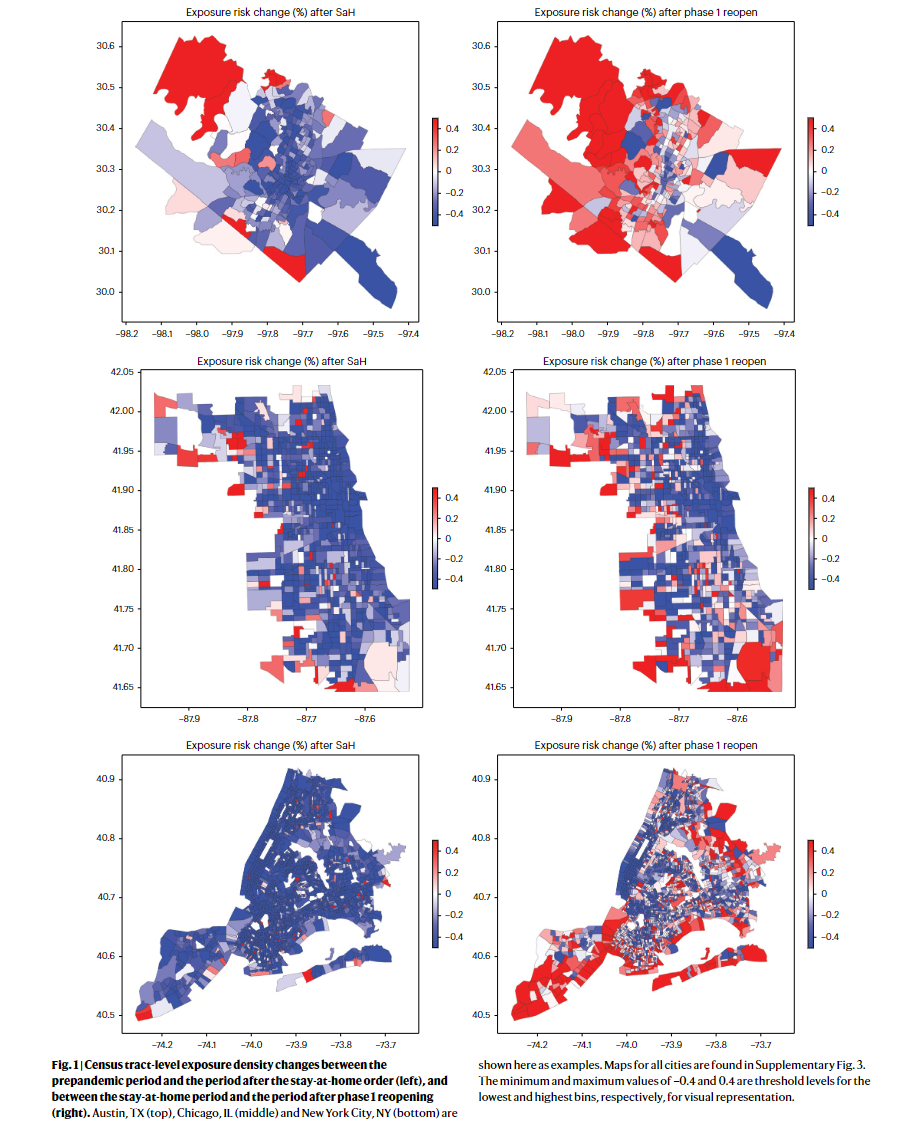
- Residents in higher-density neighborhoods may perceive a higher risk of infection
- Quadratic function as the best-fit relationship between residential population density and neighborhood infection rates
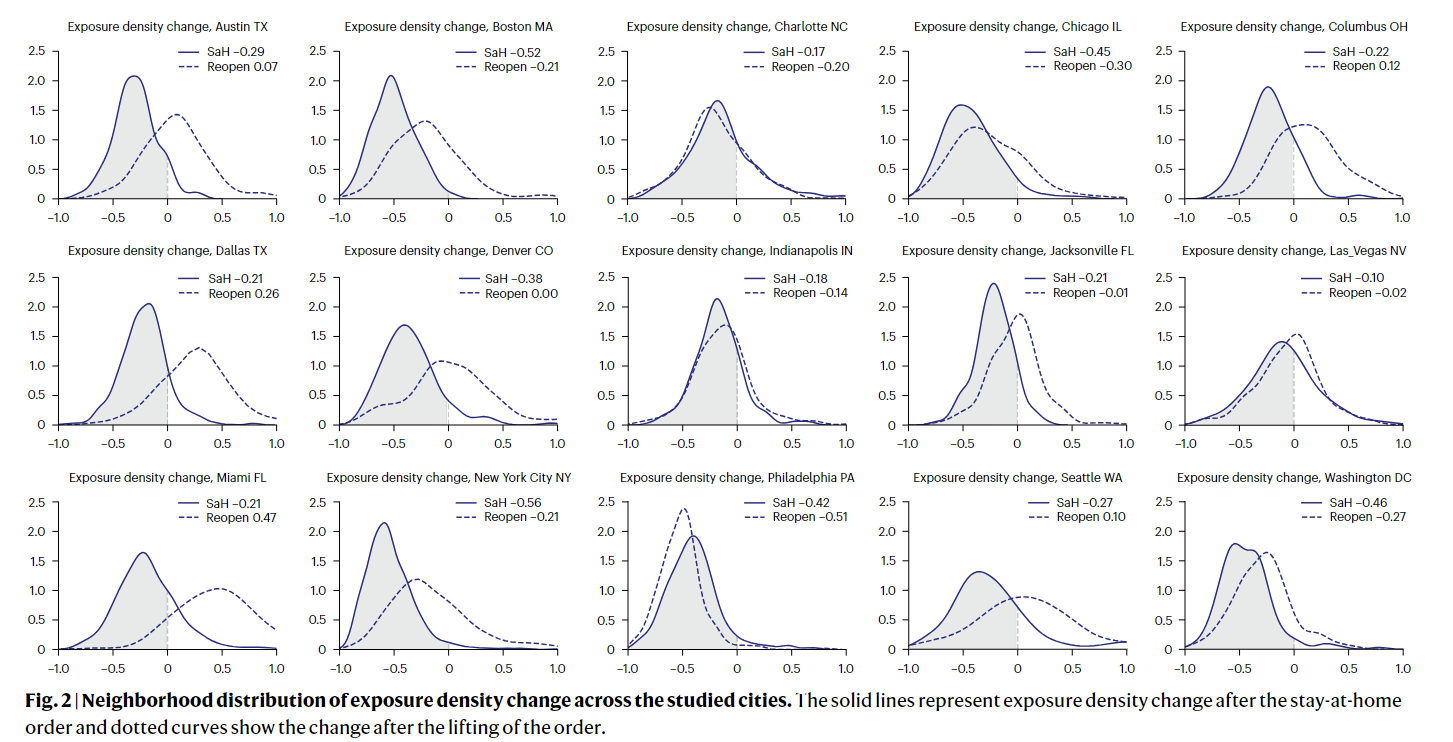
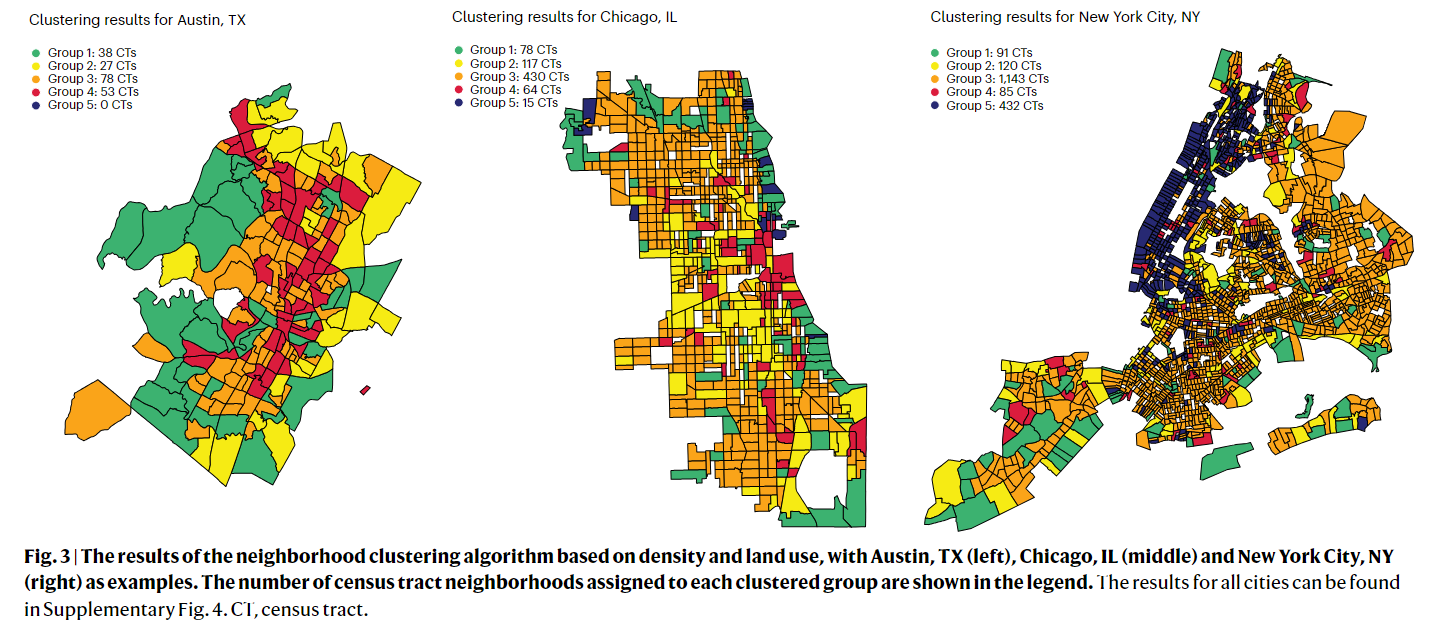
- Race and ethnicity are found to be significant factors in mitigating behavior for higher density neighborhoods
- Educational attainment and job occupation are also important determinants of social distancing and exposure density change
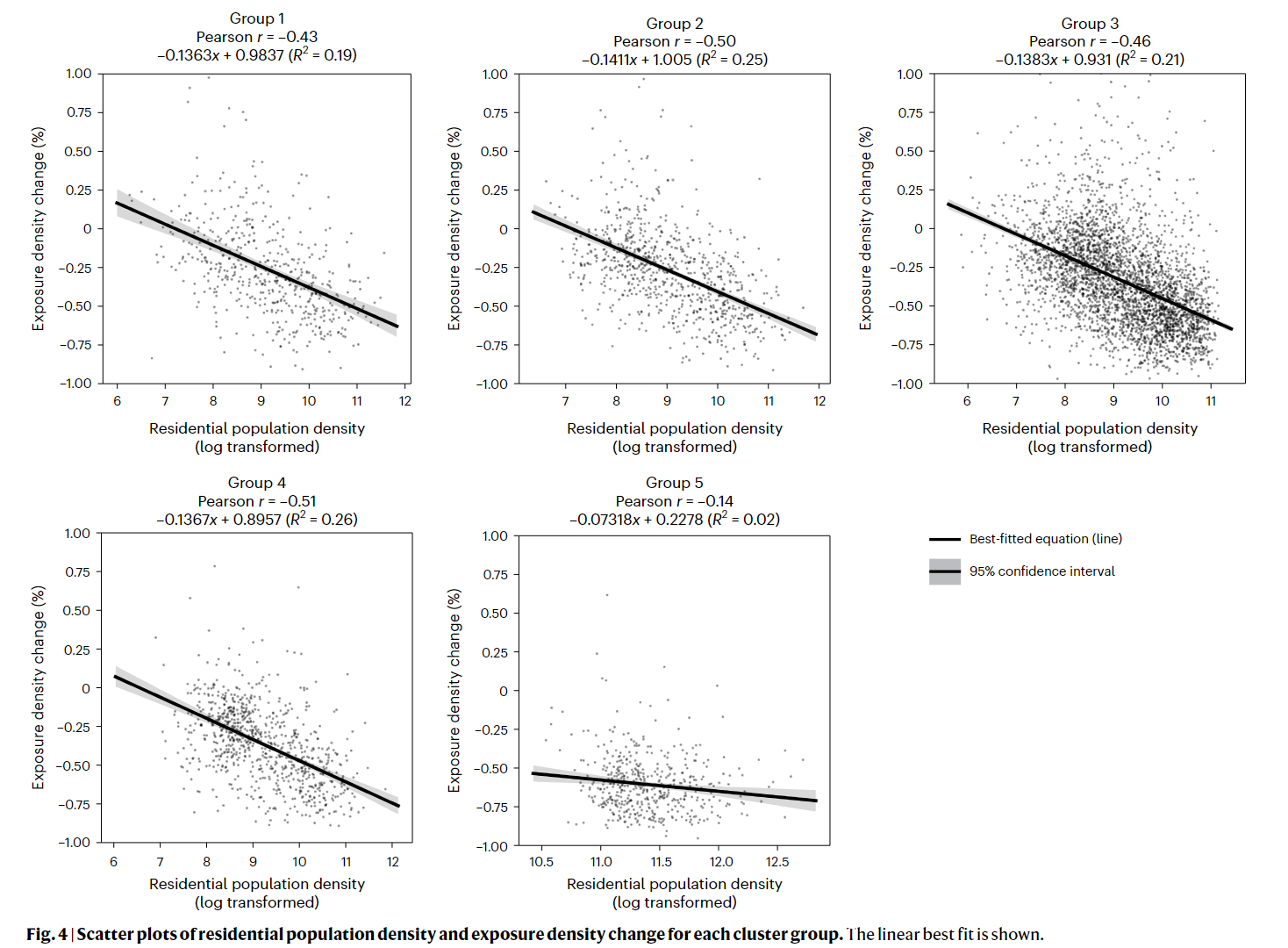
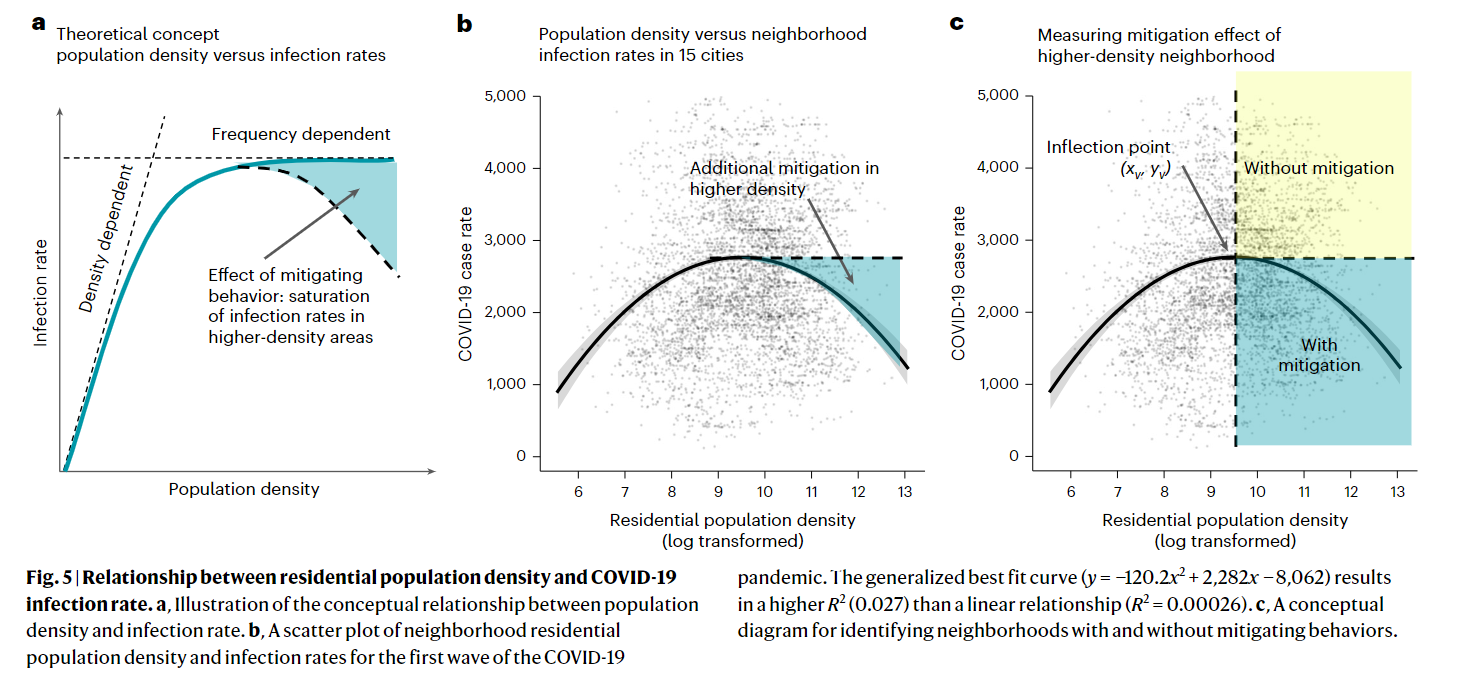
Coding Reference:





